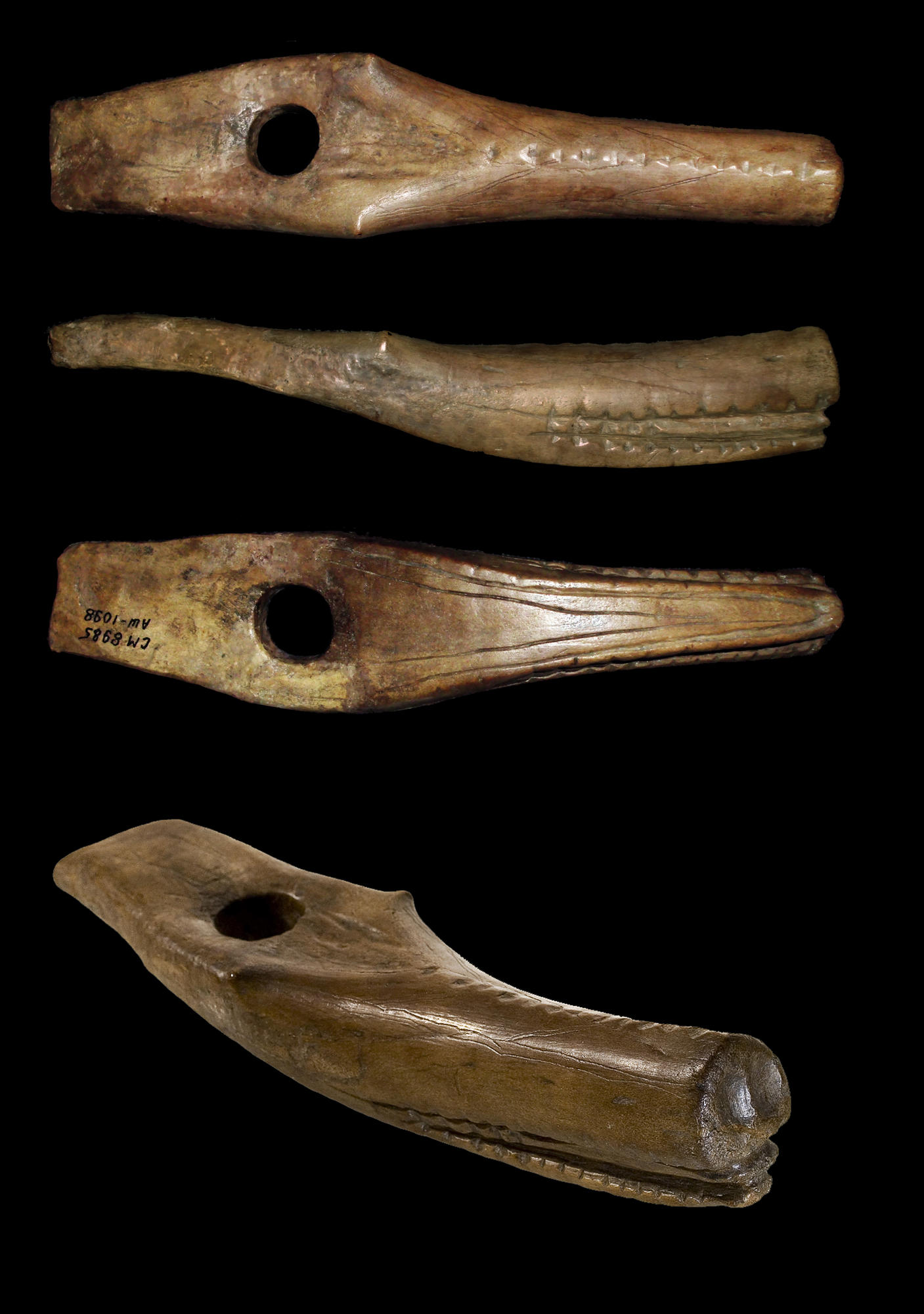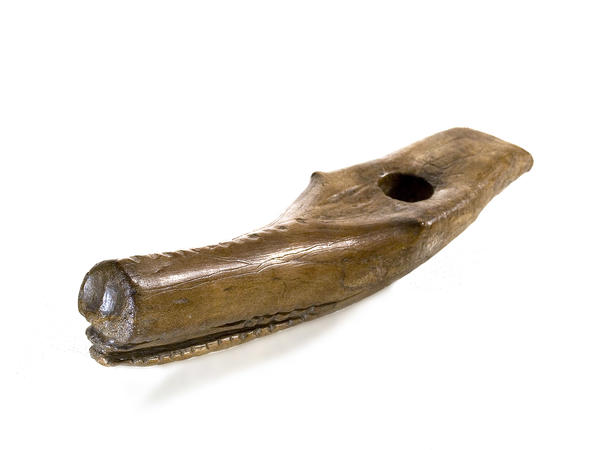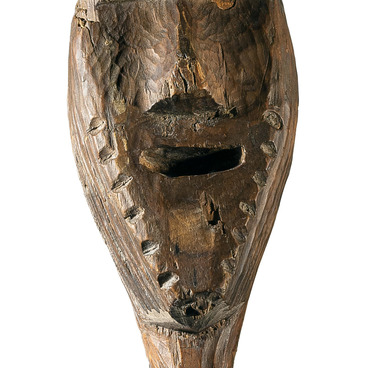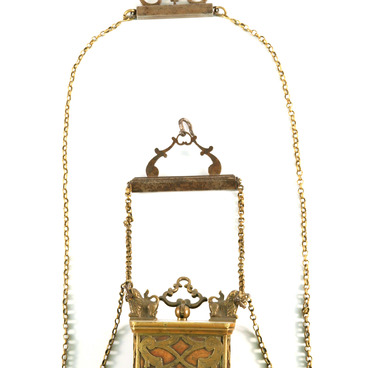The baculus finial was made of a moose deer horn 11 thousand years ago. It was discovered at gold mining in Shigir peat bog seventy kilometers off Yekaterinburg in 1887.
Finial in the form of a fantastic beast
Время создания
11,200 years ago
Размер
23,6x5,6x3,9 cm
23.6х5.6х3.9 cm
23.6х5.6х3.9 cm
Техника
Trimming, scraping, planing, carving, cutting, buffing, polishing
3
Открыть в приложении#6
Unknown Author
Finial in the form of a fantastic beast
#7
#8
The finial used to be set on the wooden handle of the baculus. The baculus had a special status of ancient people: it was used by priests for pagan rituals. The roaring beast with open teeth that crowned the baculus was an image of the totem — the tribe protector.
#10
Manufacture
#9
The finial used to be made of the part of the moose deer horn where its stem (a short base) developed into a flattened part (a paddle). The flattened part was used to form the beast body. The beast head was formed on the horn stem. The moose deer horn was a precious material for the Ural people as it is shock resistant, however, plastic, moisture and temperature resistant, and does not crack with frost.
#15
Symbolism
#11
The finial is made in the form of the head of a fantastic beast of prey.
#12
The eyes are marked as small round knobbles. They protrude on the edges of the upper surface in the widest part of the finial. Above the eyes there is a flat forehead of the beast presented by the natural horn surface. In the middle of the head a through tubular hole was made with stone chisels. The hole is located off the center of the finial, closer to the back edge of the figure. The hole is made oval with the area of five square centimeters.
The ancient man represented the open mouth with the help of two parallel longitudinal incisions. Each of them is up to three millimeter wide and three millimeter deep. The teeth are marked as deep vertical cuts. The occluded cheek fangs are shown as wide and long cavities, and the small front teeth are made with short incisions on the sides of the mouth.
#16
Finial in the form of a fantastic beast
#13
The zoomorphic finial is a fantastic image that combines features of several creatures: a wolf, a bear and a mythological mammoth fish. A row of incisions in the form of a diamond that starts from the nose bridge resembles the bristled-up wolf hair. The wavy engraved lines form two angles. They connect and proceed in the direction of the nose. The angles could symbolize the wrinkles that appear when the wolf roars.
#14
The finial was delivered to the museum in 1888 alongside with other findings discovered I the Shigir peat bog. All the artefacts were donated to the museum by Earl Alexey Stenbok-Fermor who used to own the Shigir territory. The artefacts laid the groundwork for the Shigir collection.
#17
Sverdlovsk State Regional Ethnography Museum
читать дальшескрыть
00:00
00:00
1x
Finial in the form of a fantastic beast
Время создания
11,200 years ago
Размер
23,6x5,6x3,9 cm
23.6х5.6х3.9 cm
23.6х5.6х3.9 cm
Техника
Trimming, scraping, planing, carving, cutting, buffing, polishing
3
Открыть в приложении
Поделиться




